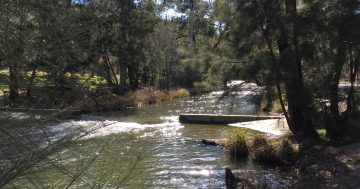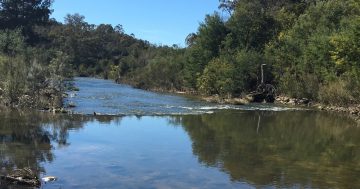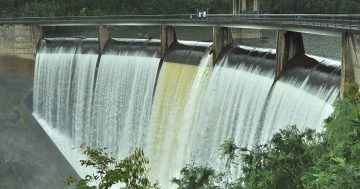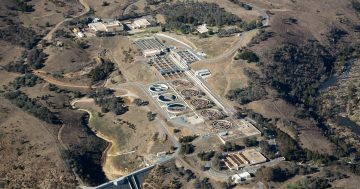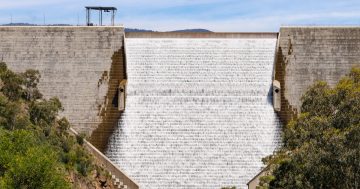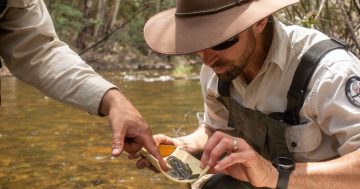On 12 March 1913, Lady Denman announced that Australia’s capital would be named Canberra. This is just one of many milestones over the 107 years that Canberra has been the nation’s capital, but if it weren’t for the Cotter River this decree may never have occurred. Nor would we be resting beneath the shadow of the Brindabella Range. Indeed, water has played a major role in the formation of Canberra as we know it today. It’s an important part of both our history and the Capital’s identity.
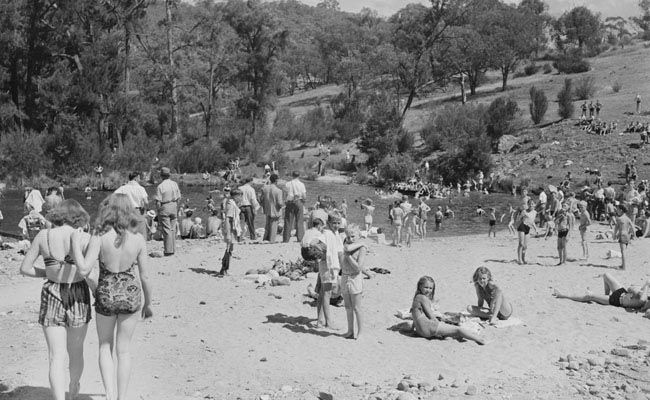
Attendees at the Trades and Labour picnic at Casuarina Sands in 1949. Image credit: National Archives of Australia: A1200, L11808.
Two votes decided the Canberra of today. With a tally of nineteen votes to seventeen it was decided that Canberra, not Tumut, would be the site of the nation’s capital. This tight vote hinged on the testimony of two men, Frederick Campbell and Ernest De Burgh, stating that the Cotter river would come to sustain our city.
Cotter’s promise
Three conditions had to be met before a site became eligible for Australia’s Capital Territory. It had to be situated near transport routes, located between Melbourne and Sydney and, most importantly, have an ample water supply. This demand for water formed the heart of the debate, with the capital requiring the capacity to support roughly 50,000 residents. The Cotter River proved worthy of the challenge.
Frederick Campbell, a resident of Yarralumla, was one of the principal advocates for the suitability of the Canberra region. He testified before an inquiry on the quality of the Cotter River, stating: “The Cotter River supplies water of the purest quality; it could hardly be contaminated being in a rough country, where farming could not be carried out.” This raised Canberra’s status to one of the top three sites for the ACT.
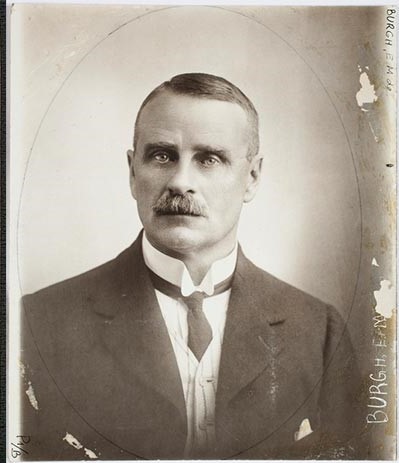
Ernest Macartney de Burgh, civil engineer, later copy of a ca. 1900-1910. Photo: Mitchell Library, State Library of New South Wales (P1/2156).
Following Campbell’s claims, Ernest De Burgh set out to verify his assertions. His discovery was so profound it generated a surge of support for the Canberra region. He claimed: “it is impossible to imagine a catchment from which a purer supply of water could be obtained…There are few cities in the world where such a magnificent supply of pure water is available.” These words shifted those two crucial votes in Canberra’s favour.
The dedication of Campbell and De Burgh in proving the superiority of the Cotter River is the reason Canberra exists as it does today. Their determination brought the Cotter’s quality to public attention and prevented the Capital resting in Tumut or Dalgety.
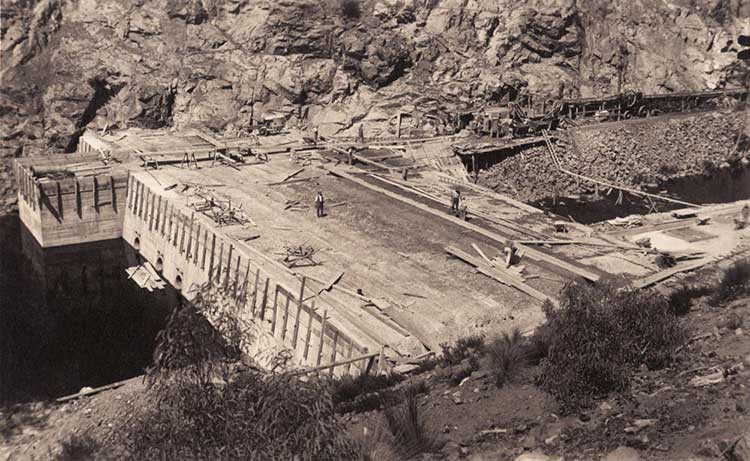
The Cotter Dam wall under construction in 1913. Photo: Canberra and District Historical Society collection.
Canberra’s identity
The foundations of Canberra’s identity have come to be known as patience and foresight. Where large cities might struggle to meet the needs of their growing populations, Canberra has taken it in its stride. Today Burley Griffin’s vision continues to take shape.
This same belief in patience and foresight is embodied by our water and sewerage infrastructure. In 1927 a young man by the name of William Glover bore witness to the transfer of government from Melbourne to Canberra. He marvelled at the foundations of our infrastructure, commenting:
“All sewerage and water supply is already laid on and that when any house is erected it can be at once supplied with water, electric light and connected to the sewerage system no matter where it is erected, you get an idea of the foresight which has been shown in the layout and preparation for the building of our capital.”
The plans for groundwork that left Glover amazed had only been instituted several years before when the capital’s population was less than three thousand. A century later these same systems serve over 400,000 Canberrans.

Laying the pipeline to connect the dam to Canberra. Photo: Canberra and District Historical Society collection.
Icon Water is committed to continuing the tradition of patience and forethought, implementing both practical measures and forward planning to maintain the ACT’s water and wastewater infrastructure to meet the needs of Canberra’s growing population.
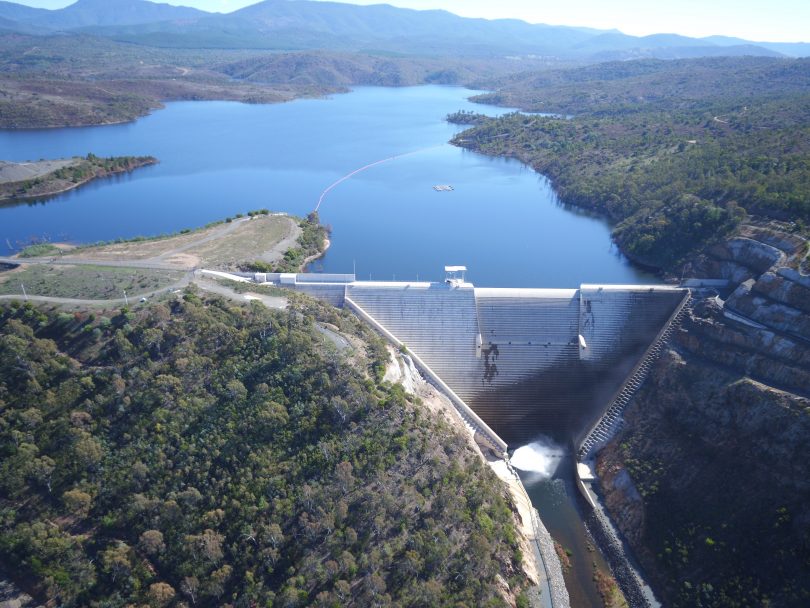
The Enlarged Cotter Dam, 2017. Photo: Icon Water.











